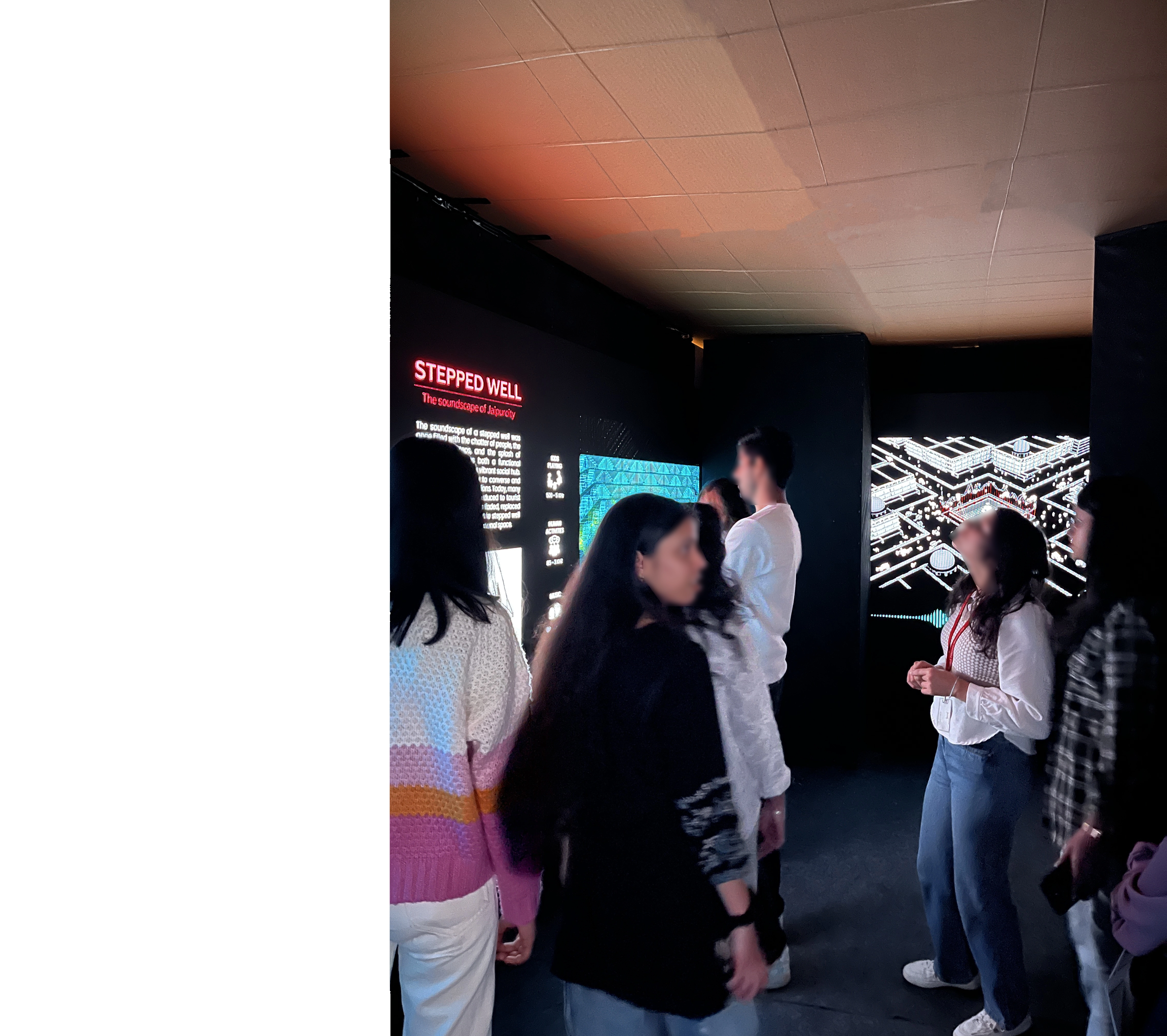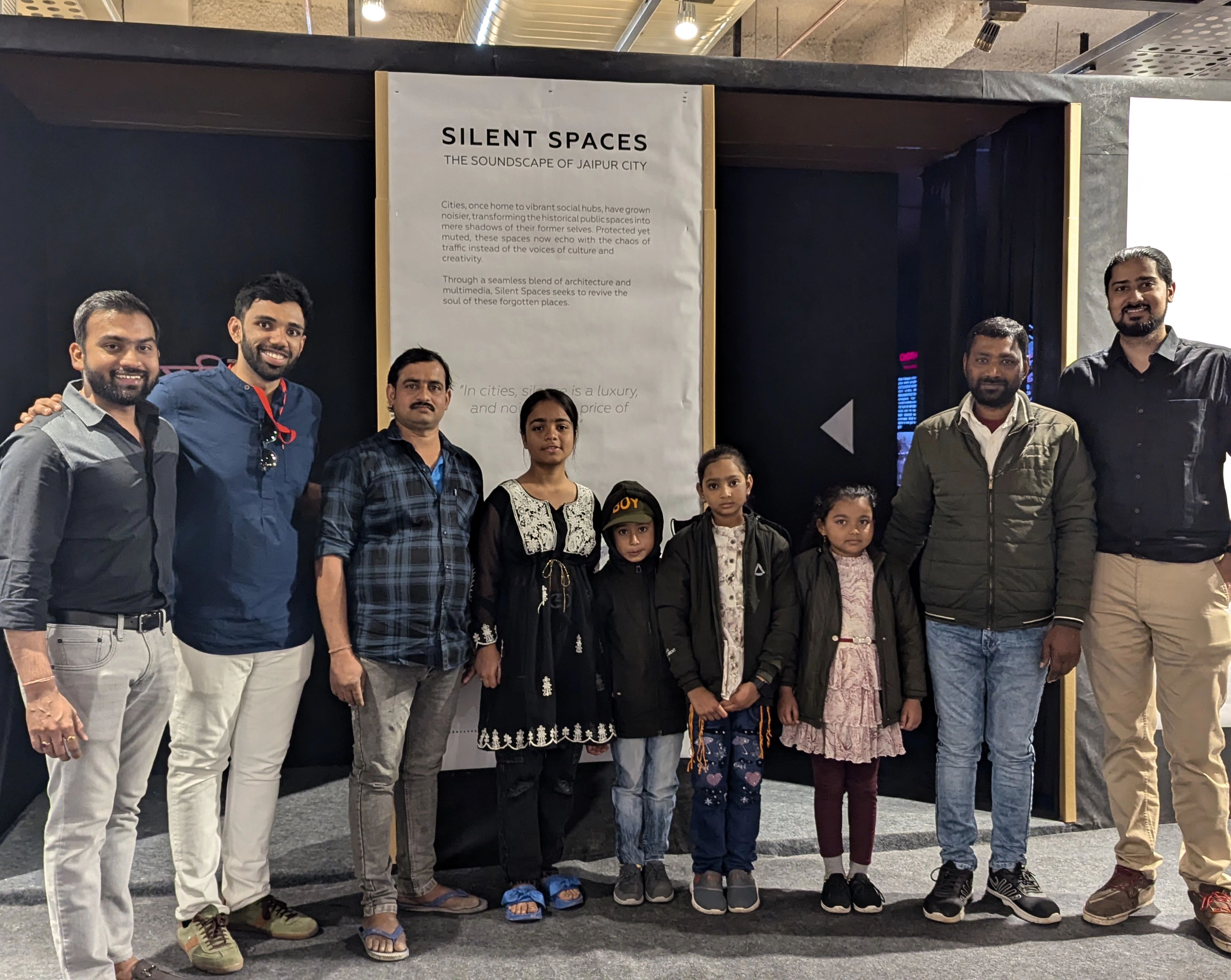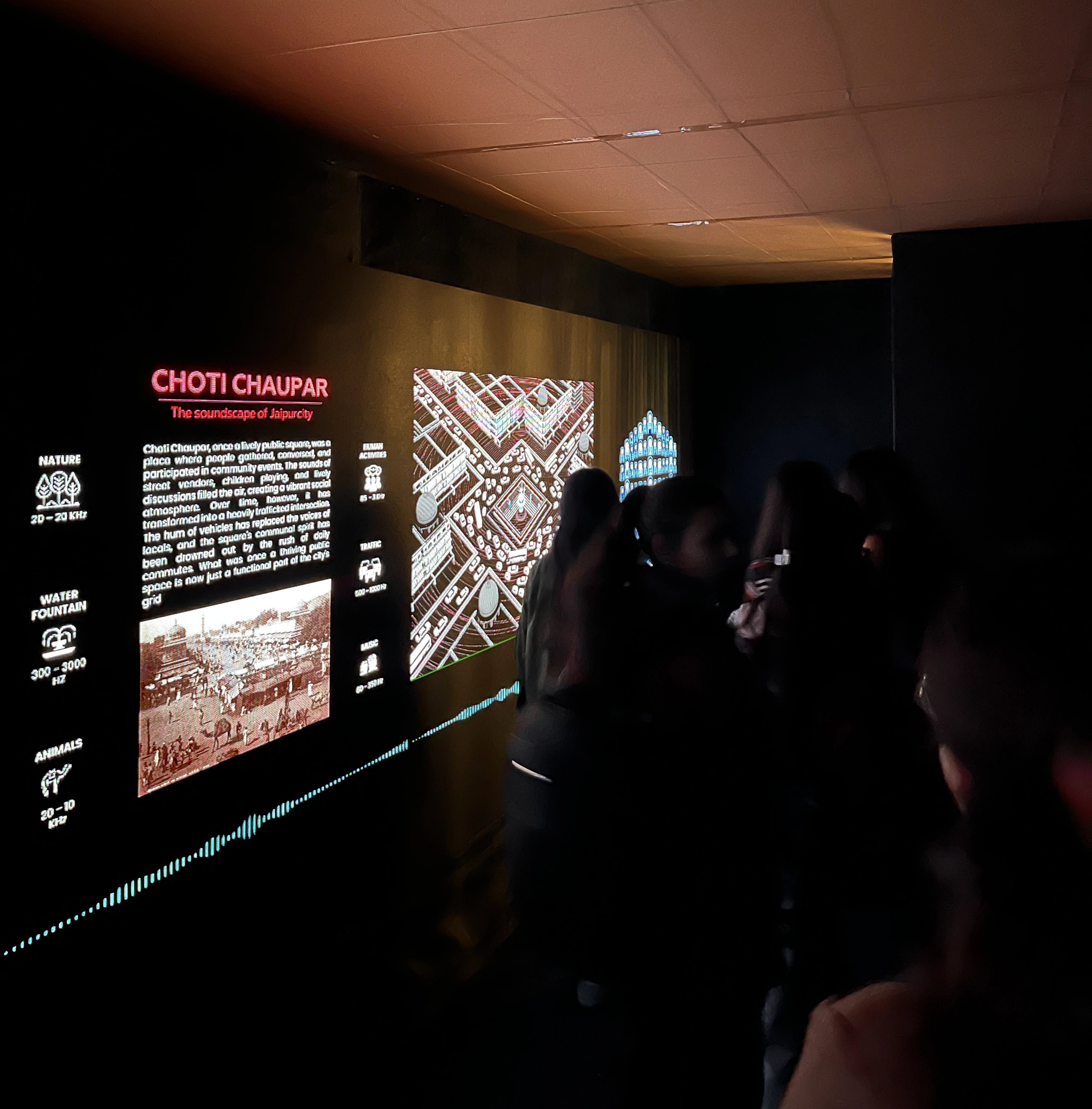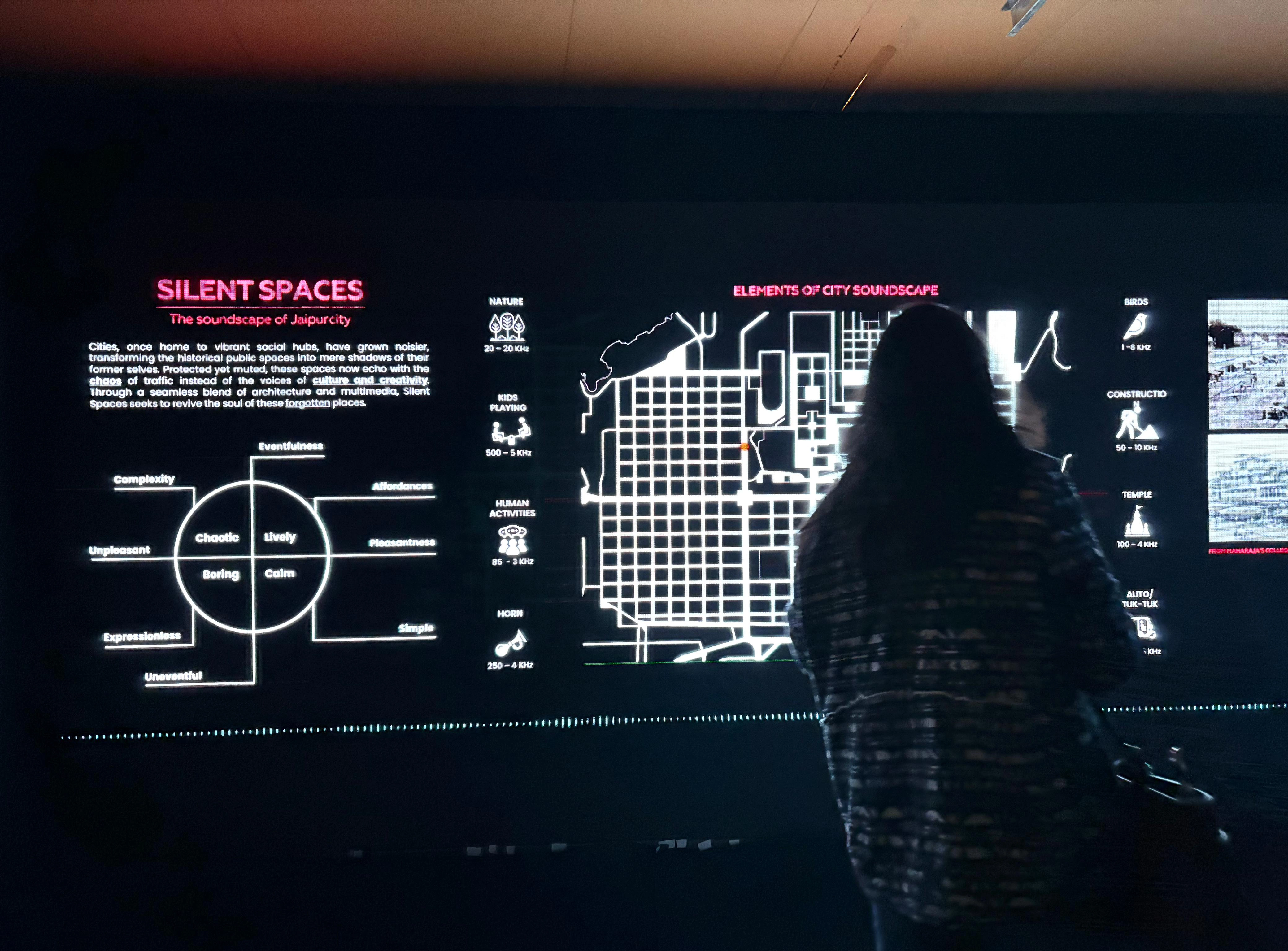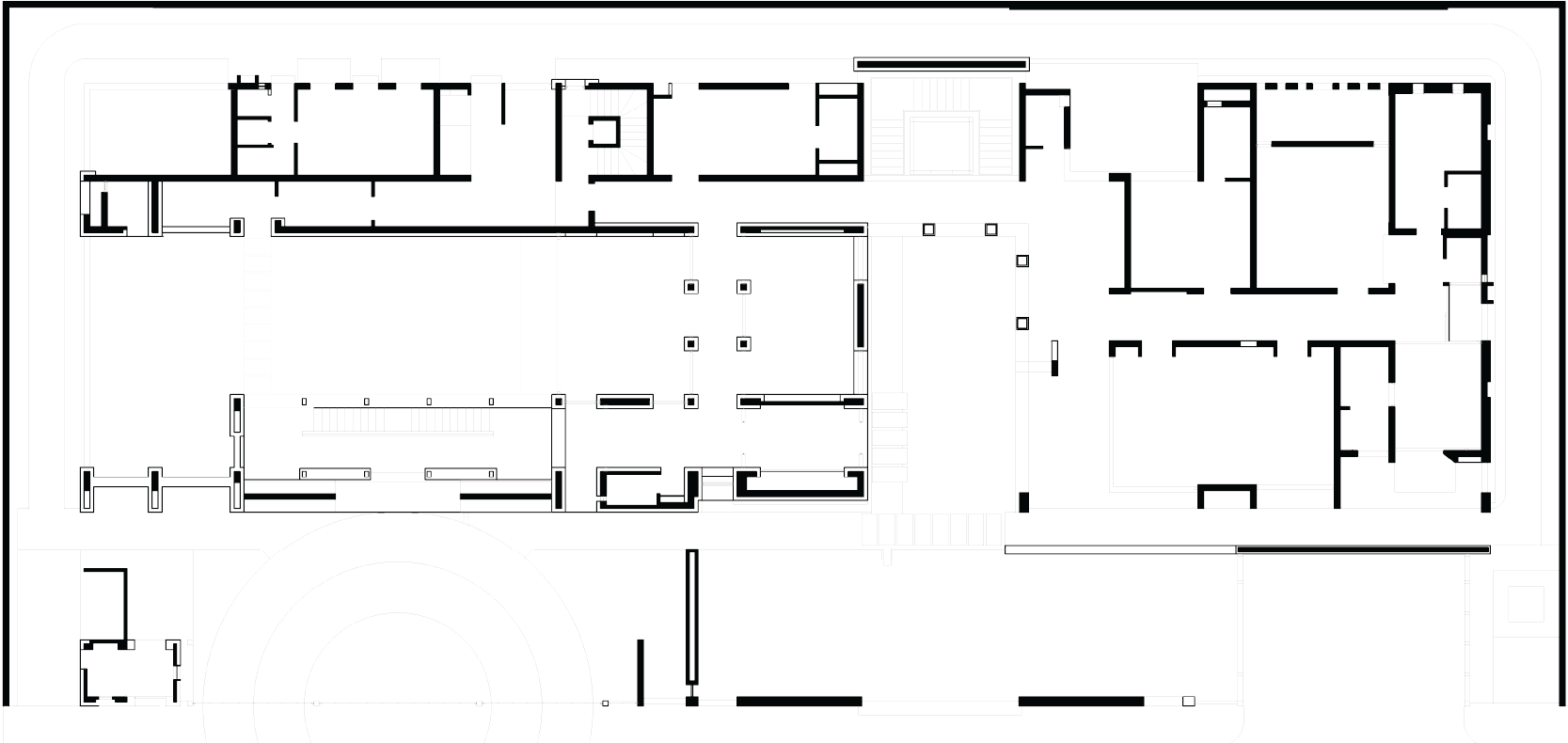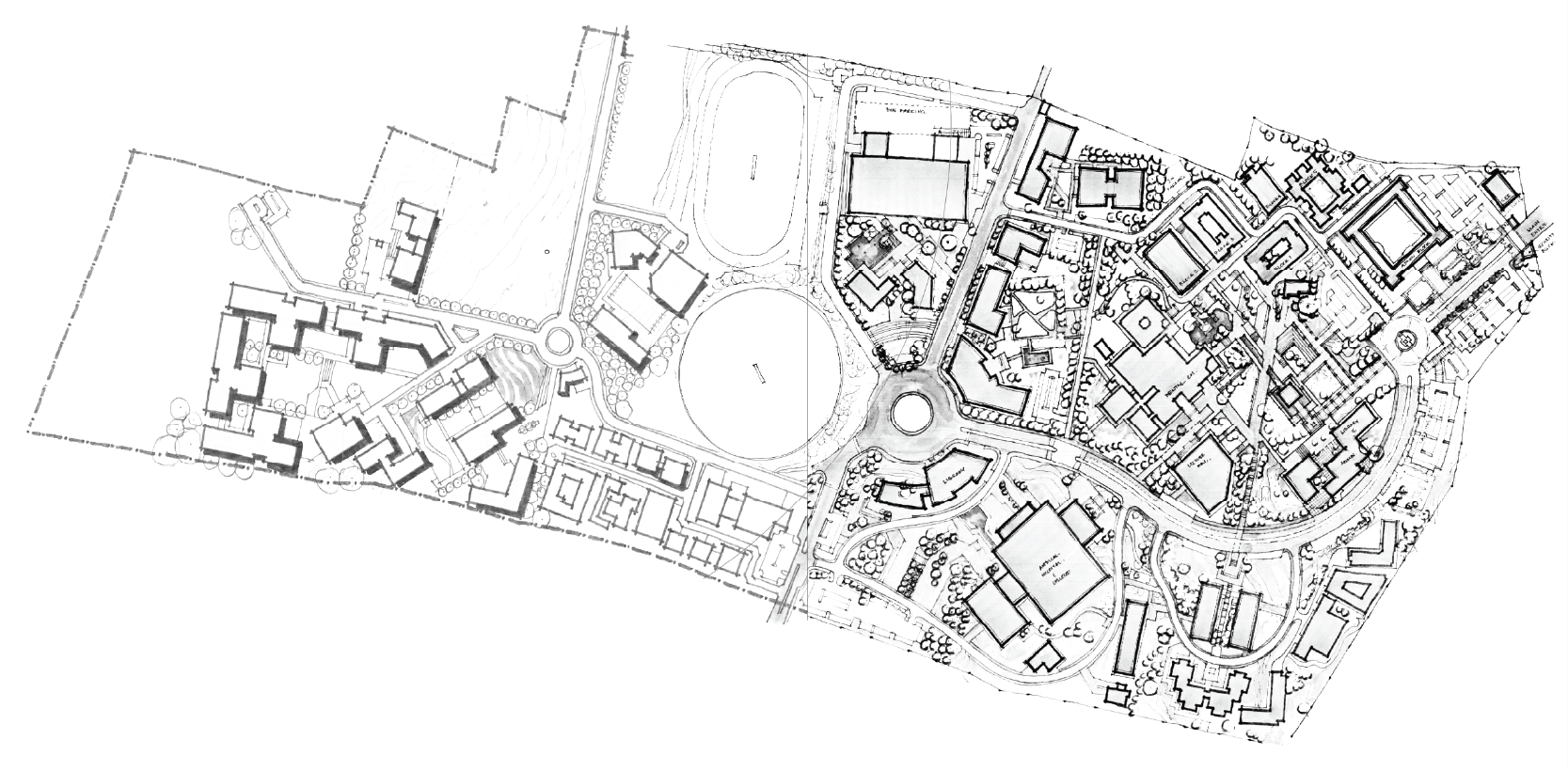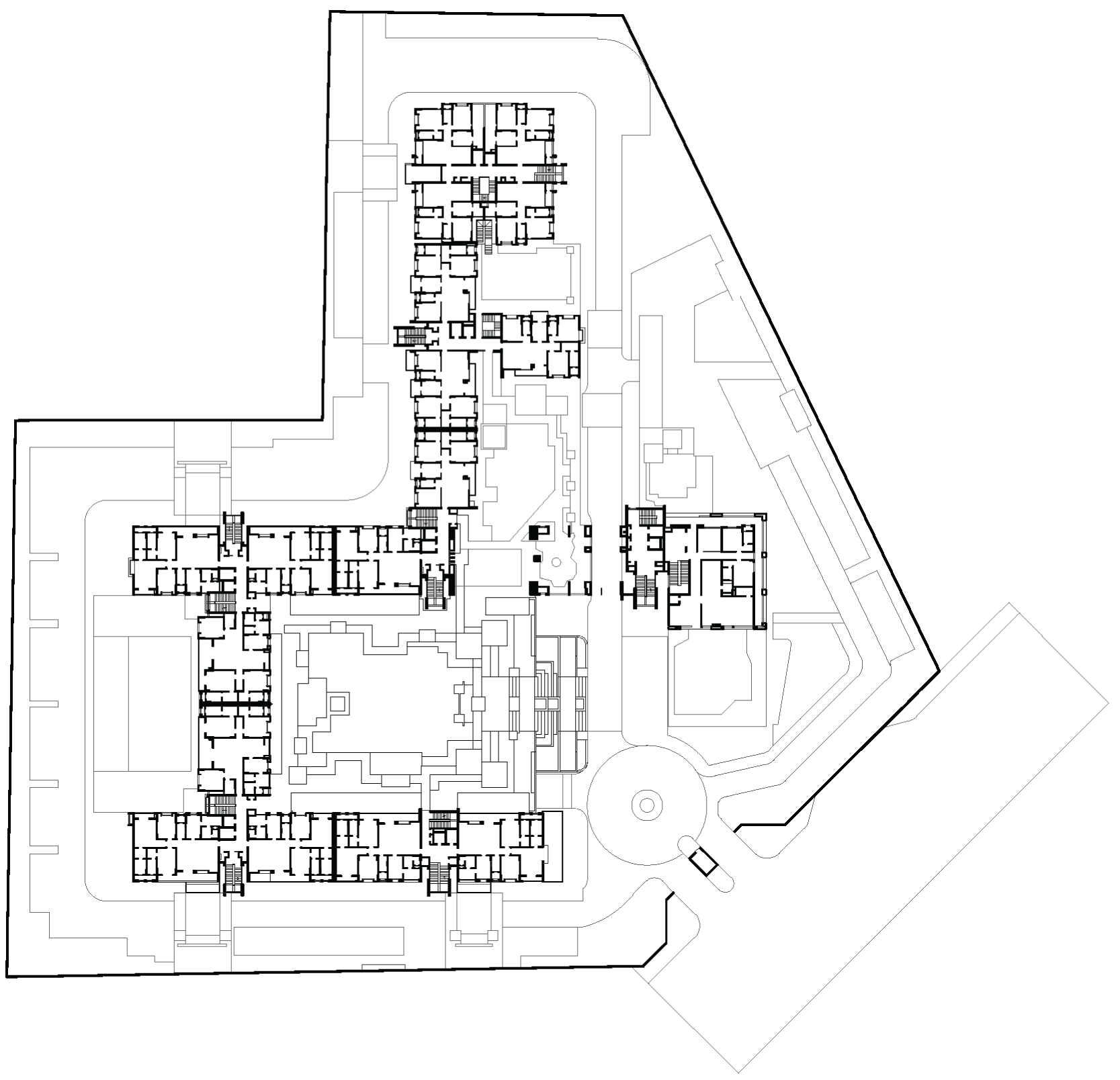
Cities, once home to vibrant social hubs, have grown noisier, transforming the historical public spaces into mere shadows of their former selves. Protected yet muted, these spaces now echo with the hum of traffic instead of the voices of culture and creativity.
Through a seamless blend of architecture and multimedia, Silent Spaces seeks to revive the soul of these forgotten places. This immersive experience bridges the past and the present, encouraging introspection and a deeper understanding of architecture's role in fostering spaces for peace and inspiration.
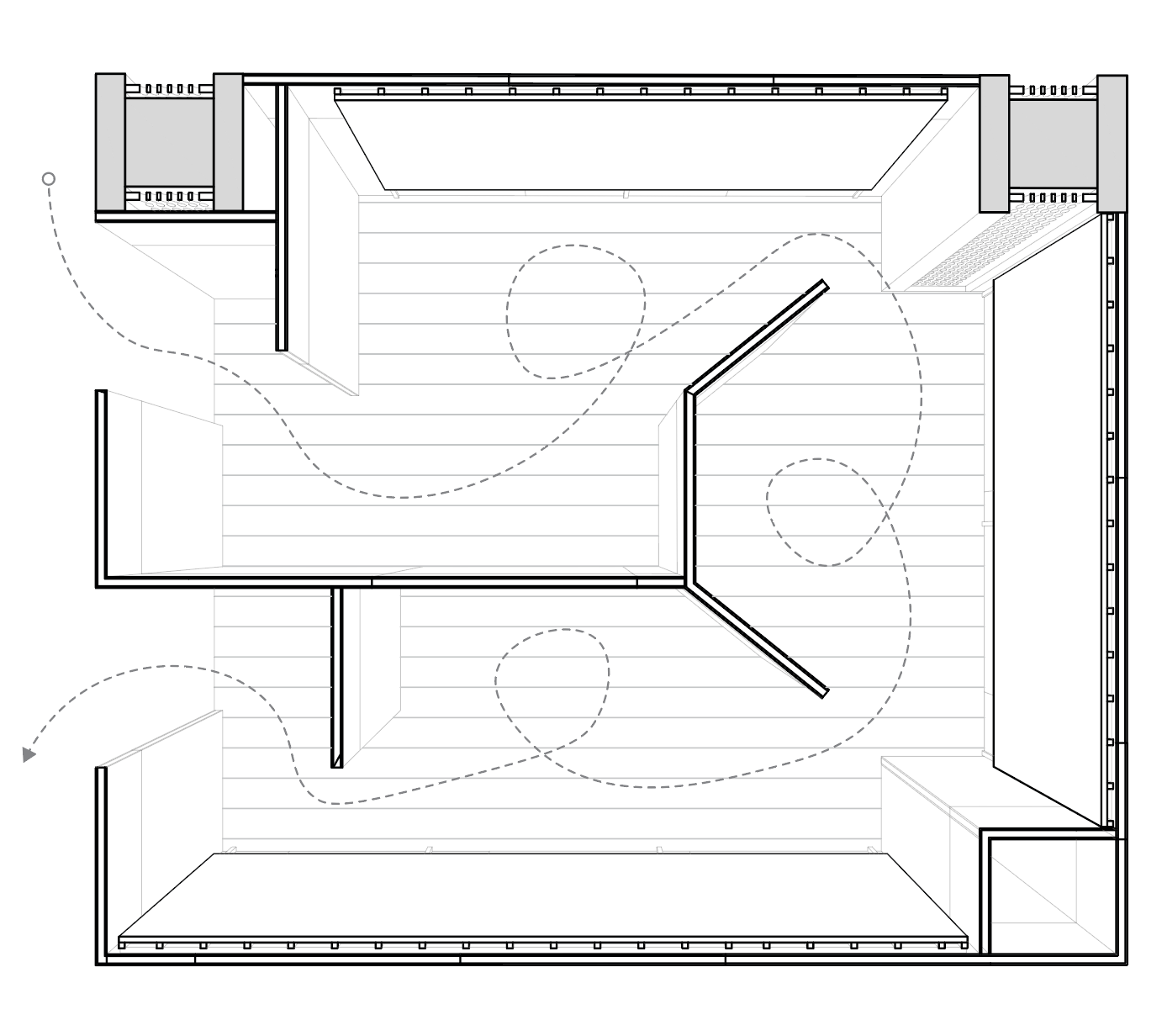
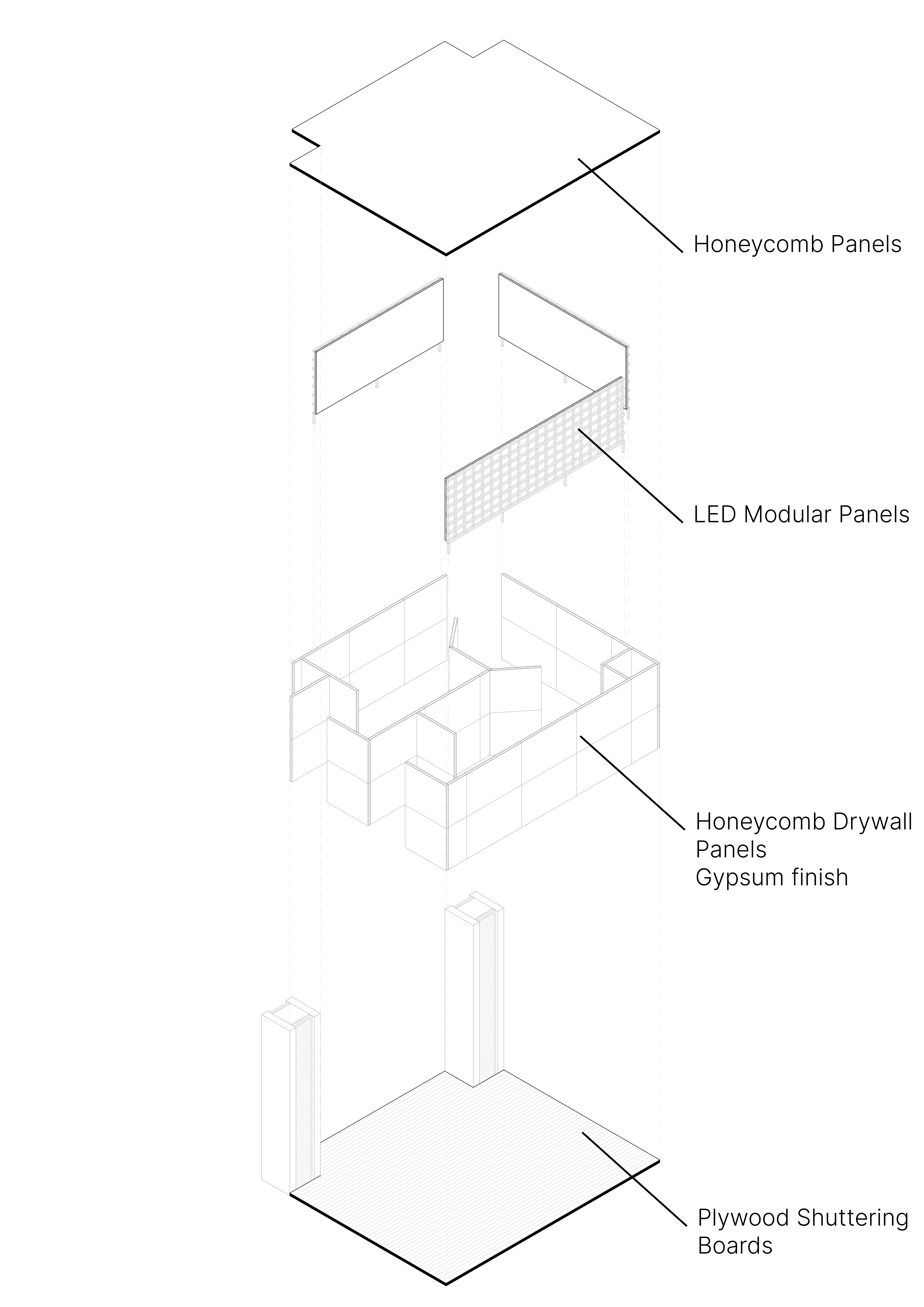
Sustainability has always been a key driving factor in our practice, and with this installation we sought to eliminate waste by adhering to principles of biodegradability, reusability, and modularity. While Silent Spaces explored sound as a form of pollution, we also recognized that physical waste and material excess remain pressing environmental issues—particularly within the exhibition industry, where custom, single-use installations often generate significant waste.
To counter this, the roof’s acoustic insulation was made from biodegradable cardboard panels, while modular drywall systems with honeycomb cardboard cores were later repurposed at our construction sites as temporary worker shelters. The LED panels were borrowed from our collaborator and reassembled using their modular system, and the flooring comprised standard shuttering plywood and boards that returned to active construction use after the exhibition. All graphic materials were printed on paper rather than plastic-based flex, ensuring that the entire installation remained environmentally responsible and circular in its material life cycle.
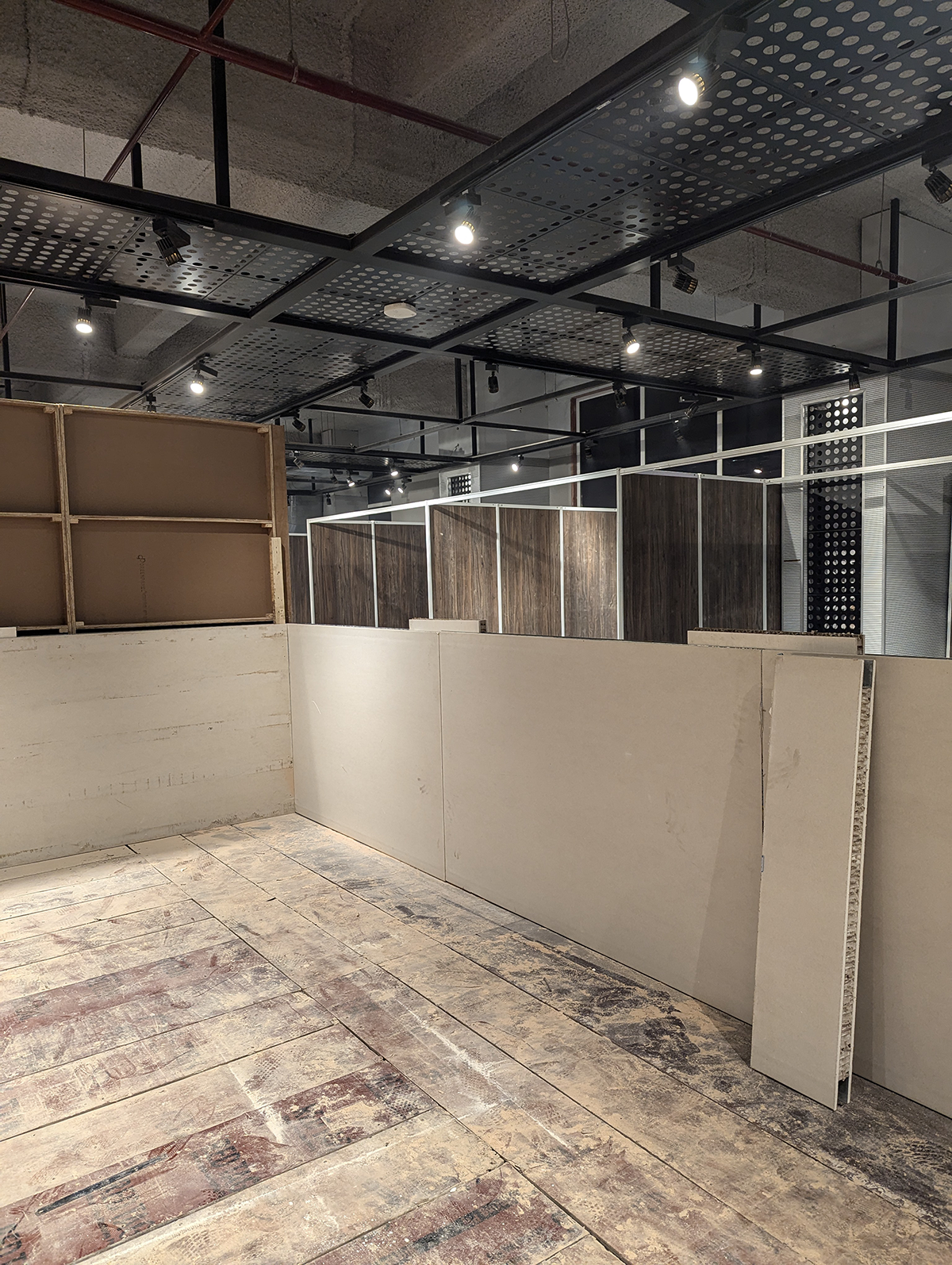
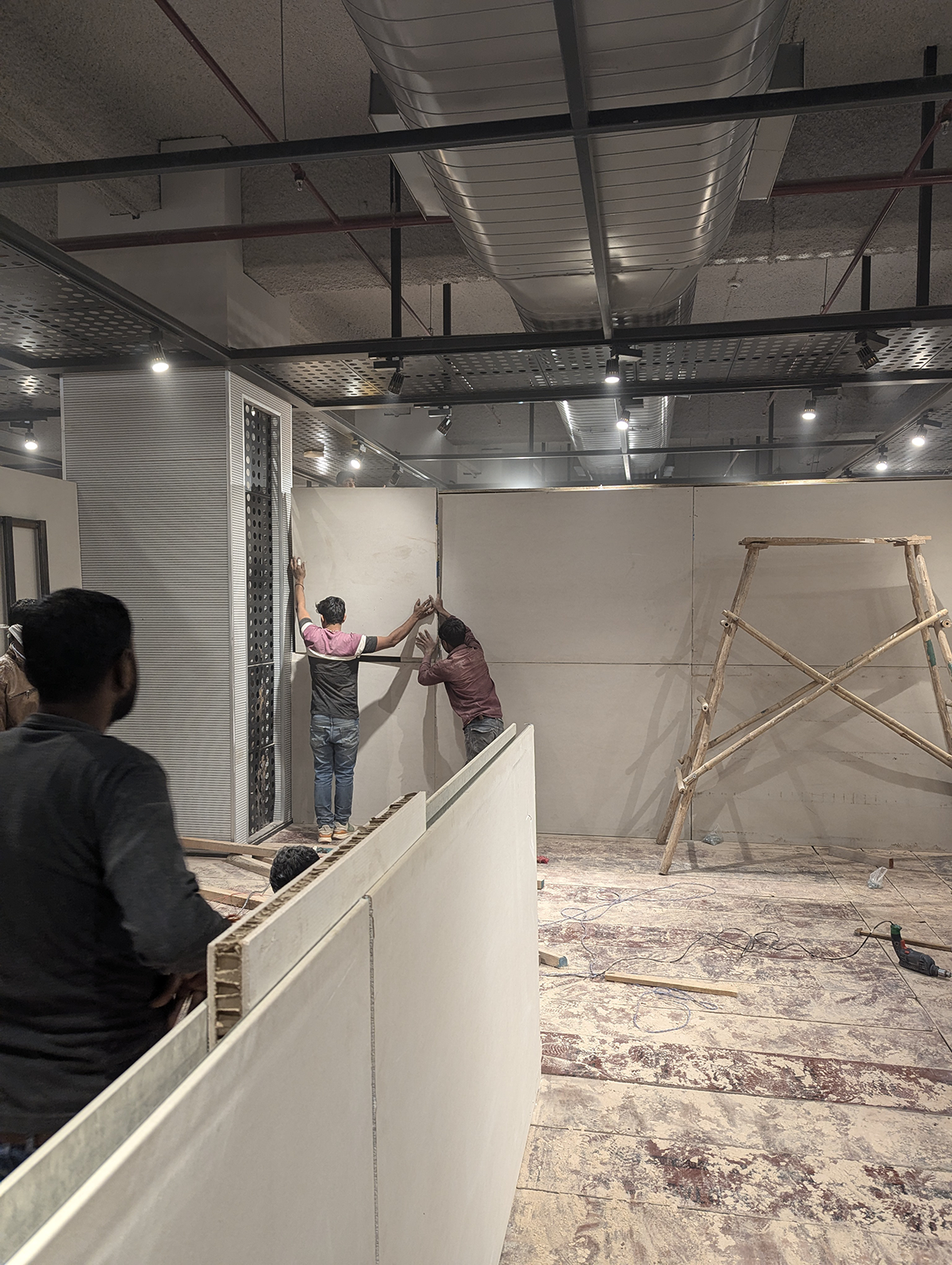

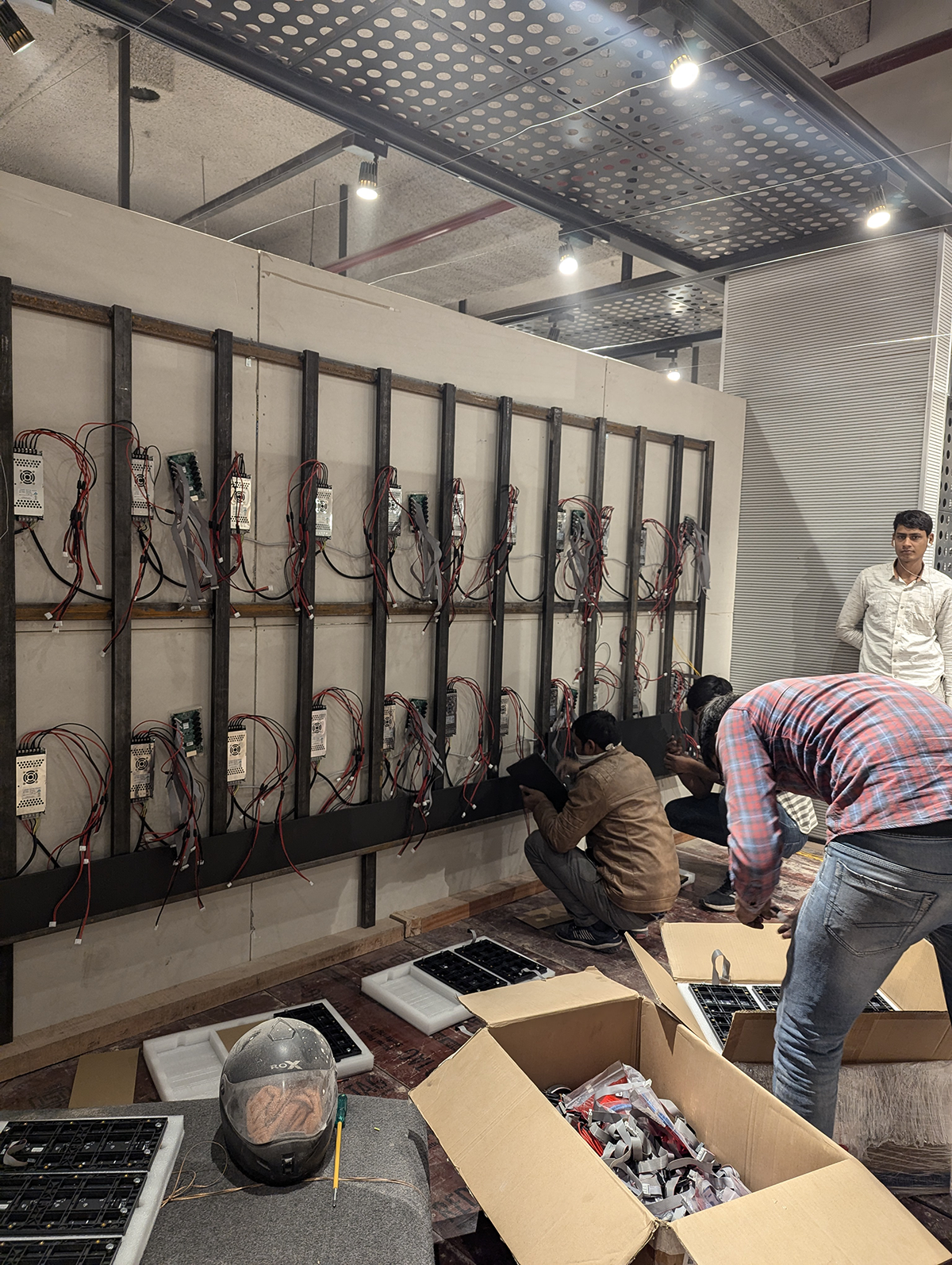
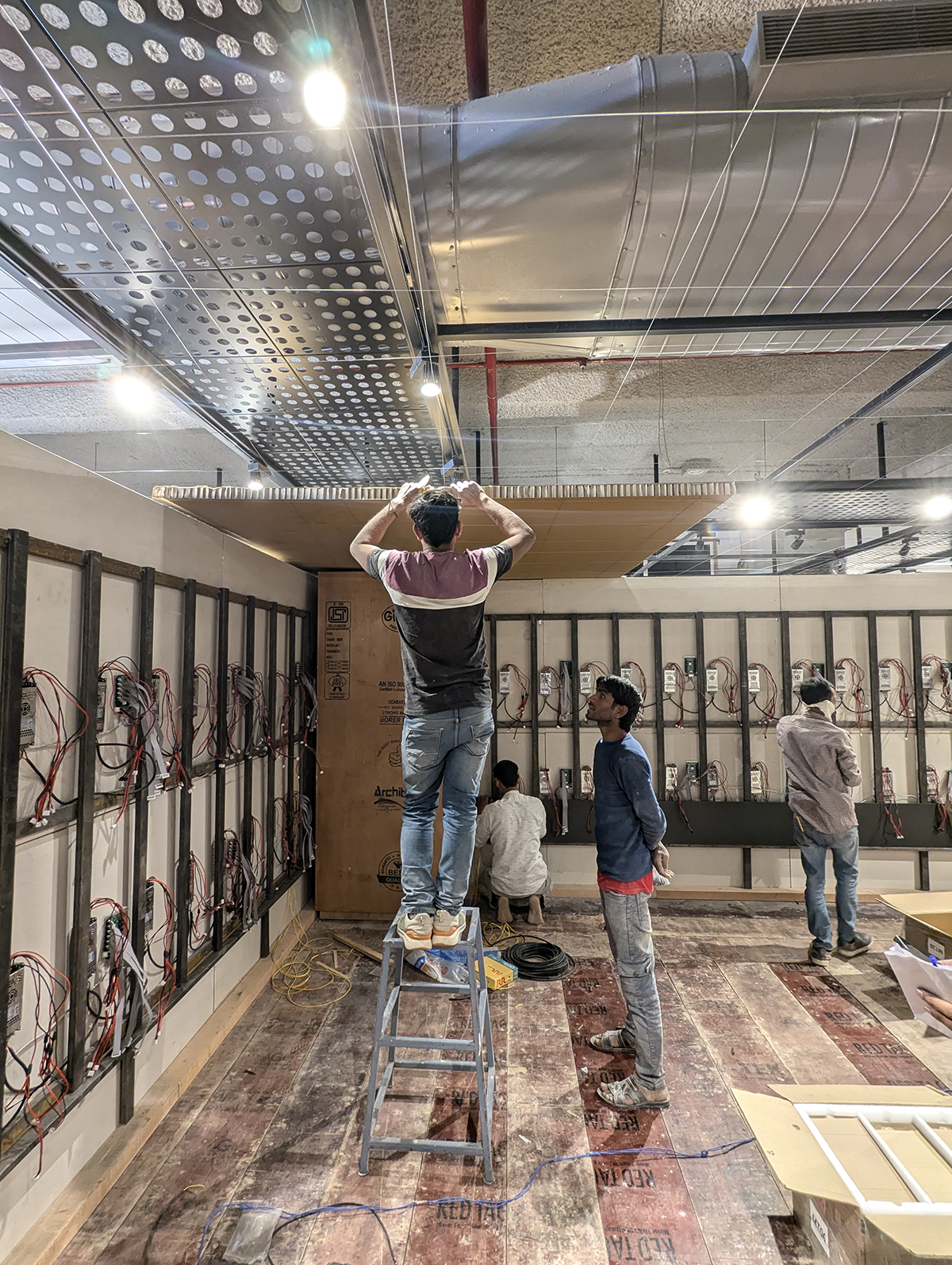
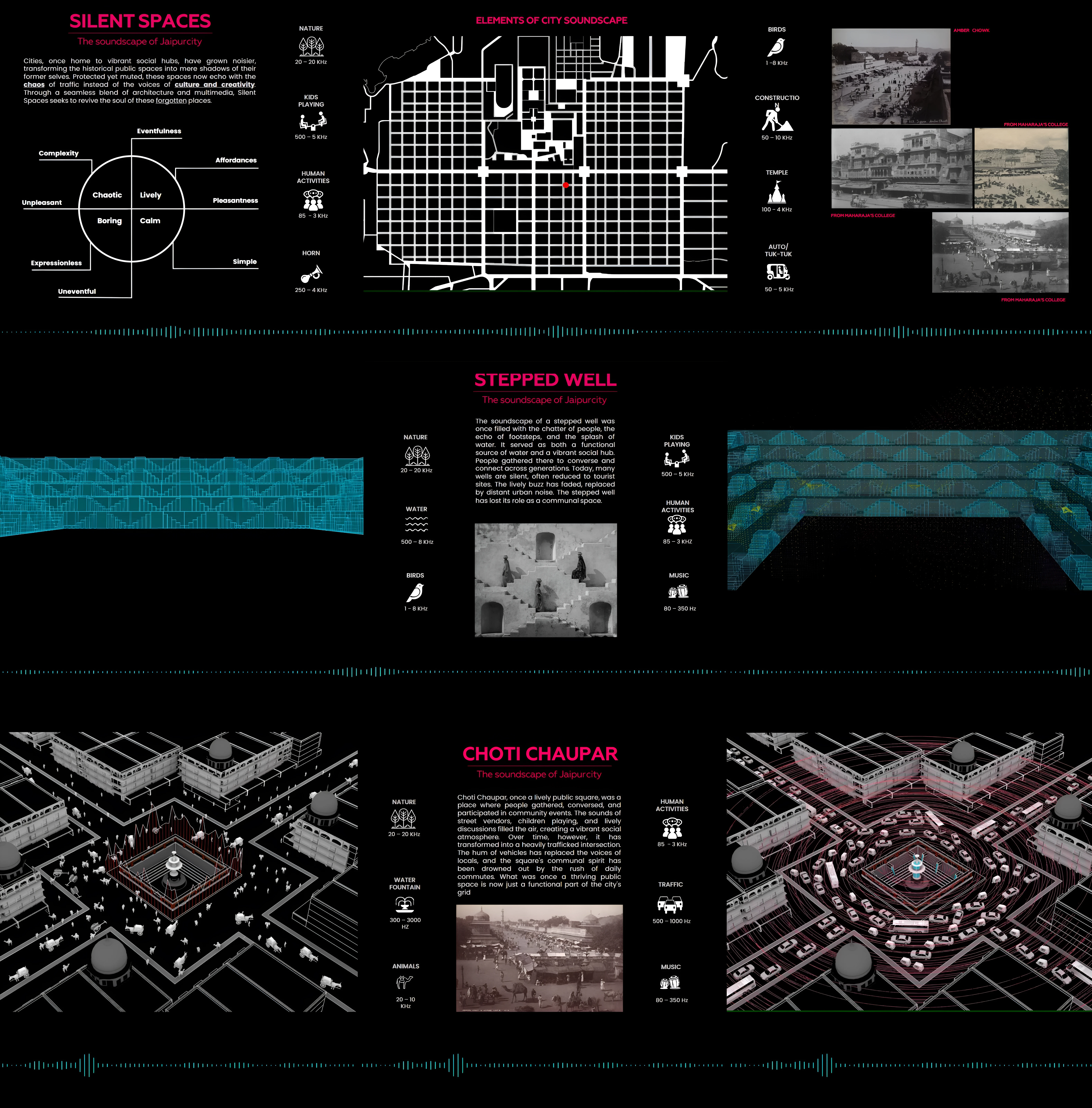
Screen 1 — The Sound of the City
Once, every city had its own sound — a rhythm born from its people, its craft, and its rituals. The old city resonated with the hammering of metalworkers, temple bells in the distance, the chatter of neighbours, and the laughter of children in narrow streets.
Today, these sounds survive only in fragments, buried beneath the constant hum of engines and traffic. Silent Spaces begins here, where memory meets noise — inviting the visitor to listen again to what the city once was.
Screen 2 — Spaces That Fell Silent
There was a time when water drew people together. The stepped wells, once vibrant centers of community life, echoed with songs, stories, and laughter — women drawing water, children diving in, and birds circling above.
Now, these spaces stand still. Overlooked or overrun, they are fenced, regulated, or forgotten. Their silence tells a story — not of absence, but of transformation.
Screen 3 — The Vanishing Courtyard
At the heart of the old city lay Choti Chaupar, a sunken public square where the community gathered to listen to the radio, share news, and rest as bullock carts and pedestrians passed slowly above.
Today, the rhythm has changed. The radio is drowned by the roar of traffic, and the courtyard lies hidden beneath layers of asphalt and haste. As the journey through Silent Spaces ends, the visitor emerges into this present — where silence must be sought, not found.
Visitors often returned to Silent Spaces seeking something rare — silence. In the gentle hum of the installation, they found moments of peace, nostalgia, and wonder; an echo of what once was and what a city could be again. The experience reminded many that silence is not the absence of life, but the presence of awareness — a condition that nurtures creativity, empathy, and calm amid urban chaos.
The installation was received with open hearts, its message resonating across audiences and the media alike. Addressing a subject ever so relevant yet seldom discussed, it invited dialogue on how cities might be reimagined as sanctuaries of stillness. In our humble belief, if each of us contributes, even in small ways, to restoring this balance, we can help shape cities that breathe — quieter, kinder, and more human for generations to come.
